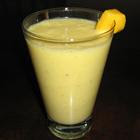Salvia Officinalis, a highly versatile plant, has many other names such as Sage, Common sage, Garden sage, Kitchen sage, Culinary sage, Dalmatian sage, Purple sage, Broadleaf sage, Red sage and Spanish Sage It is a small perennial evergreen shrub with woody stems, grayish leaves, and blue to purplish flowers. It is part of the mint family (Lamiaceae) and is native to the northern Mediterranean region. There are several species, including garden or true sage (S. officinalis), the sage most commonly used in foods. Many varieties of garden sage are known, but the Dalmatian type possesses the finest aroma. Garden sage is native to France and other parts of southern and eastern Europe, and is still cultivated extensively there and in the United States and Russia.
Sage has been used for thousands of years for medicinal as well as culinary purposes. The word comes from the Latin “salvare” which means to “cure or heal”. Although the effectiveness of Common Sage is open to debate, it has been recommended at one time or another for virtually every ailment. In ancient times it was thought that if a person had a sage plant growing in his yard, he would be
prsperous and possibly immortal. Today we can readily use sage's properties through its blood essence - called essential oil. Read More>>>

















0 comments:
Post a Comment